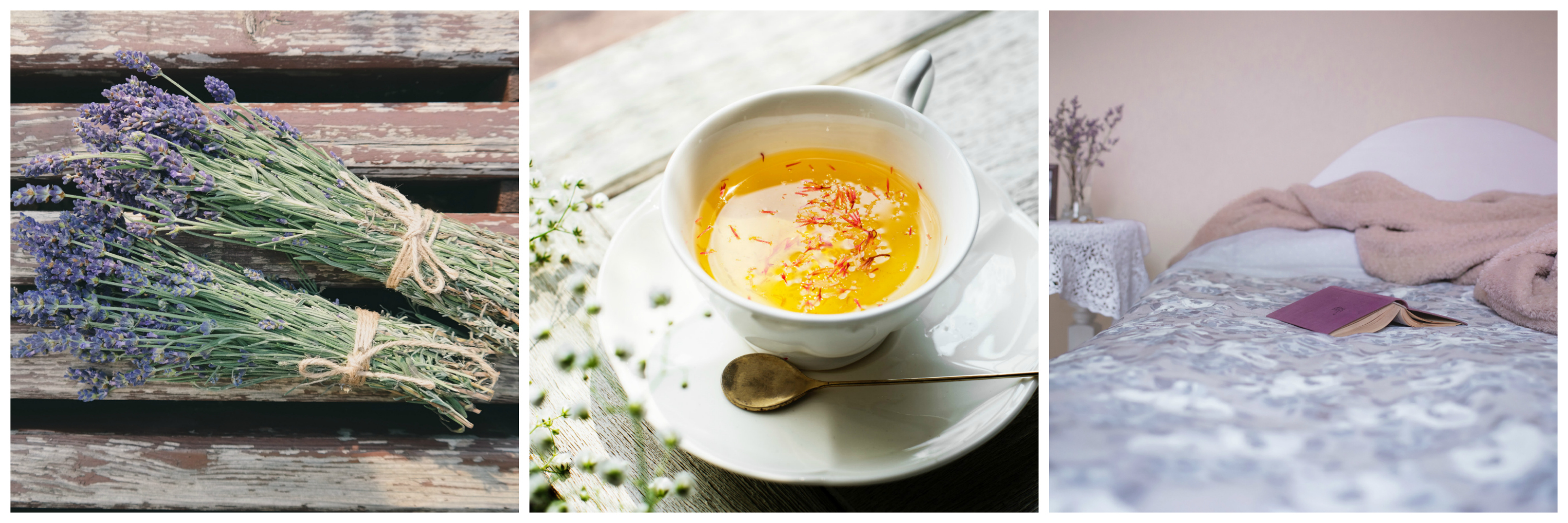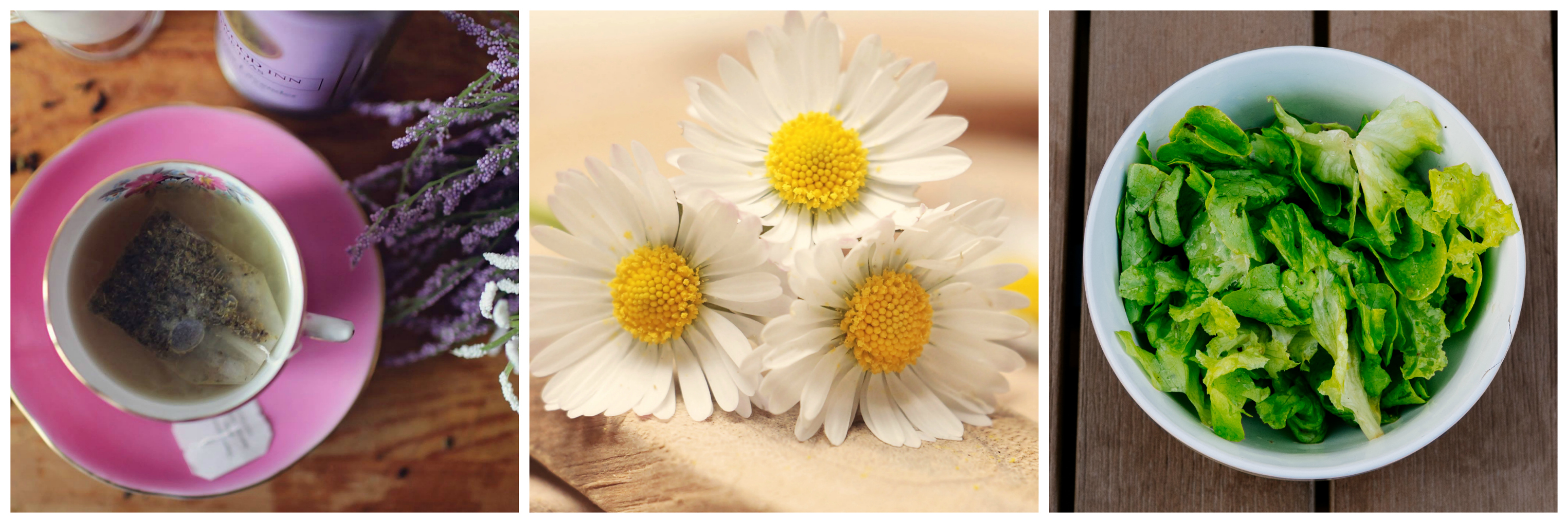
You’d think it would be easy to drop off to sleep after a long late Summer’s day spent outdoors indulging in all your favourite activities (especially sewing!) but sometimes that just isn’t the case. Luckily there are some simple herbal remedies that can help…
Chamomile has been well established as a herbal aid to sleep since the time of the ancient Egyptians. It’s native to Europe and northern Asia, and is now naturalised in the USA. Culpeper wrote that “the bathing with a decoction of chamomile taketh away the weariness, and easeth pain.” He recommended the “flowers boiled in a posset drink.” Chamomile is a relaxant for the nervous system, soothing, calming and tranquilizing for restless or over-sensitive people. Its volatile oil with its delicious scent has the effect of relaxing muscles and aiding the digestion. Chamomile tea is widely available commercially, or make your own by infusing 2 tablespoons of chamomile flowers to 600 ml (approx 1 pint) of boiling water. Stand, covered, for 15 minutes, then strain and sweeten with honey.
Hops grow vigorously in northern temperate zones and are cultivated in Europe, the USA and Chile. Dried hop flowers, the female “cones” of the hop which are so strongly scented have been used to make “hop pillows” for the sleepless for generations. They help to sooth the highly strung, relax twitching or restless muscles and are a mild sedative. Make a cup of hop tea at bedtime, using the same method as camomile tea (above) for a good restful night’s sleep.

Lavender is one of the best-known aromatic herbs. It’s native to the Mediterranean, but is grown across the globe. It can be used to make a pillow in the same way as the hop pillow above adding, if you like, a few hops, some camomile flowers and lime blossoms. Sprinkle a few drops of lavender essential oil over the flowers before you sew up the pillow. John Parkinson, herbalist and apothecary to King James I of England (VI of Scotland) in the early 17th century, describes the fragrance of lavender as “piercing the senses.”
Lettuce has a very old reputation as a harmless herb to help and encourage sleep (another good reason to eat plenty of salads!). Its old-fashioned country names include “sleepwort”. In the 18th century lettuces were grown for the white sap in their stems which contains lactucanum, which was used as a sedative up until the end of the 19th century. This substance was introduced into mainstream medicine in the 1770s and was known as “lettuce opium.” It was even used to adulterate true opium, being a mild sedative and used before the days of anaesthetics for pain relief. So, if you want a good night’s sleep, be sure to eat plenty of salad at bedtime, to ingest this natural sedative that soothes restlessness and muscle tension.
Beatrix Potter’s famous children’s story of the Flopsy Bunnie falling asleep after munching their way through Mr McGregor’s lettuces was based on scientific fact!

Valerian was used by early Arab physicians as a medicinal herb and still has a place in medicine today as a non-addictive tranquilizer, being found in many over the counter remedies. It reduces blood pressure, is useful in stress and insomnia and good for menopausal symptoms too. All heal, self heal and Blessed Herb are among its old country names. Valerian should only be used on prescription since large does are inadvisable and it doesn’t mix well with orthodox drugs. But it is powerfully sleep inducing and soothes the over-sensitive, the nervous and worried and has been used to great effect in nervous exhaustion and anxiety states. Tincture of Valerian was used to treat shell shock in the First World War.
We hope you’ve found this helpful…if you’ve got any other top tips for a restful nights sleep then please do share them int he comments below. We’d love to know!
*Article originally appeared in Bustle & Sew Magazine
Leave a Reply